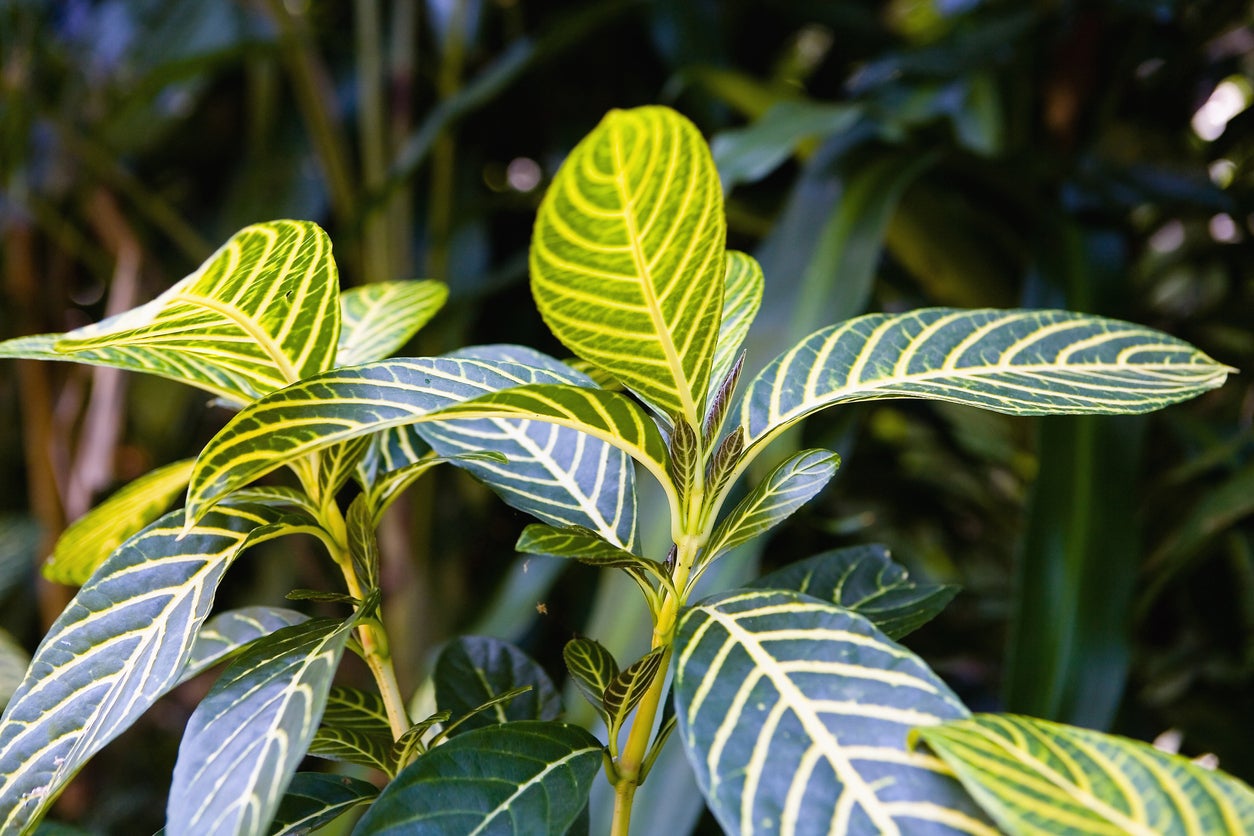Aphelandra Zebra Houseplant - Growing Info And Zebra Plant Care


Perhaps you want to know how to care for a zebra plant, or maybe how to get zebra plant to bloom, but before you can find the answers to questions about zebra pant care, you need to find out which zebra plant you have sitting in your window.
About Zebra Plants
I've never been a big fan of Latin. Those long, difficult to pronounce binomials always trip up my tongue. I write them for gardeners who have an interest in such things and, yes, I admit I've spouted them off a few times to people who think gardeners are all overgrown children who like to play in the dirt, but the truth is, I prefer the more fanciful common names - until I run into something like zebra plants. There are two types of zebra houseplants and when you look at their scientific (Latin) classification, you can see that Calathea zebrina and Aphelandra squarrosa have nothing in common other than their common names.
Aphelandra Zebra Houseplant
Our subject here is Aphelandra squarrosa. These "zebra plants" are members of a large Brazilian family and in their rain forest habitats, grow into large, upright shrubs that bloom profusely in the moist, tropical heat. This zebra houseplant is known for its large, shiny leaves and dark green foliage deeply veined in white or yellow, reminiscent of zebra stripes, hence the common name. Their brightly colored flowers and bracts make for a prized display. They're usually pretty small at the time of purchase and many indoor gardeners consider them a short-lived friend. Even with excellent zebra plant care, your Aphelandra squarrosa will only give you a few years of pleasure, but don't despair. Part of how to care for a zebra plant is propagation. New plants are easily grown from 4- to 6-inch (10-15 cm.) stem cuttings. Remove the bottom leaves and stick the stem cuttings directly into potting medium or into a glass of water until new roots form. In this way, your original plant can last for decades!
How to Care for a Zebra Plant
Because they are tropical, Aphelandra zebra plants prefer warm climates and will do well in average household temperatures around 70°F. (20°C.) and around 60°F. (15°C.) at night if they are kept out of drafts. They do need high humidity and setting their pot on a tray filled with pebbles and water or regular misting should be an integral part of how to care for a zebra plant. They may thrive in 40-80 percent humidity, but they don't like wet feet. Use a potting medium that drains well and keep it moist, not wet. One of the common problems in Aphelandra zebra plant care is drooping or falling leaves - usually from too much water.
Getting Aphelandra Zebra Plant to Bloom
If you want to learn how to get Aphelandra zebra plant to bloom, you must understand the natural rhythm of the plant. If you're thinking of purchasing a plant, find one whose bracts are just beginning to form. In early winter, your plant will go into semi-dormancy. Growth will be minimal, and fortunately for those of us who live in colder climates, the plant actually likes temperatures a little lower than normal. Don't let the soil completely dry out, but water a little less frequently. By late winter, you'll see new growth and should water with a weak fertilizer solution every two weeks. Once side shoots develop and new flower heads can be seen, move your plant to the brightest possible area and water generously. Summer is the time for bloom, and it is the bracts that provide the yellow, orange, or red-tinged ‘flower.' The true flowers die within days, but the colorful bracts can remain for months. Once these begin to die, they should be removed and the plant cut back to allow room for future new growth and the yearly cycle begins again. Aphelandra squarrosa makes a wonderful zebra houseplant. The intriguing foliage and the production of the beautiful bracts are your reward for the care you give your plant.
Sign up for the Gardening Know How newsletter today and receive a free copy of our e-book "How to Grow Delicious Tomatoes".

Jackie Rhoades began writing for Gardening Know How in 2010.